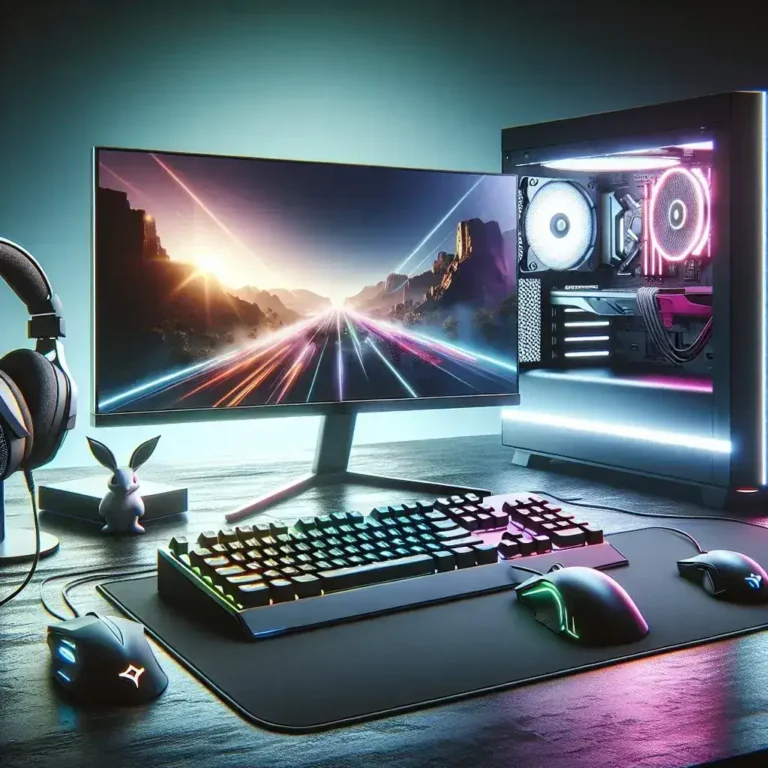When it comes to optimizing your gaming experience, every detail matters – from your choice of mouse to the type of mouse pad you use. While it might seem trivial, the difference between a gaming mouse pad and a regular mouse pad can significantly impact your performance. In this article, we will explore the distinctions between these two types of mouse pads, helping you make informed decisions about which is right for you.
| Feature | Gaming Mouse Pad | Regular Mouse Pad |
|---|---|---|
| Material | High-quality, durable materials designed for precision | Basic materials often focused on cost |
| Surface Texture | Optimized for speed and control (smooth or textured) | Standard surface texture |
| Size Options | Larger options for maximum movement | Standard sizes |
| Customization | Often customizable with RGB lighting or designs | Minimal customization options |
| Pricing | Generally more expensive | More affordable |
Understanding the Key Differences
To delve deeper, let’s break down the essential features that separate gaming mouse pads from regular mouse pads.
1. Material
The material used in a mouse pad significantly affects its performance. Gaming mouse pads are typically made from high-quality materials such as cloth, hard plastic, or hybrid options. These materials are specifically chosen for their durability and ability to provide consistent tracking performance. On the other hand, regular mouse pads often use cheaper materials that may wear out quickly over time.
2. Surface Texture
The surface texture of the mouse pad influences how the mouse glides over it. Gaming mouse pads come with a finely tuned surface designed to provide a balance between speed and control. Gamers often require swift movements with precision, thus surface optimization is crucial. Regular mouse pads, however, tend to have a generic texture that may not cater to specific performance needs.
3. Size and Shape
Gaming mouse pads are often available in a variety of sizes, including extra-large options that accommodate sweeping mouse movements, essential for certain gaming genres like first-person shooters. Regular mouse pads usually come in standard sizes, which might be limiting for intense gaming sessions.
4. Thickness
Another aspect to consider is thickness. Gaming mouse pads can vary from thin to extra-thick, catering to different preferences for comfort and activity. Thicker pads can provide cushioning for long gaming sessions, while thinner pads may offer a closer feel to the desk for precision control. Regular mouse pads generally have standard thicknesses that may not provide the same level of customization.
5. Customization and Aesthetics
In recent years, gaming mouse pads have embraced aesthetics alongside functionality. Many gaming mouse pads feature RGB lighting, vibrant designs, and the ability to personalize the appearance. This level of customization appeals to gamers who want their setup to reflect their personal style. On the contrary, regular mouse pads typically offer limited design choices and functionality.
6. Pricing
When it comes to cost, gaming mouse pads tend to be more expensive due to the materials used, specialized features, and marketing aimed at gamers. Regular mouse pads, on the other hand, are generally more budget-friendly and designed for casual use.
Choosing the Right Mouse Pad for You
The right mouse pad really depends on how you use your mouse. If you’re a casual user who only needs a pad for regular tasks like browsing or working, a simple, regular mouse pad will suffice. However, if you’re heavily involved in gaming, investing in a high-quality gaming mouse pad can enhance your overall experience.
Considerations for Gamers
- Choose the appropriate surface for your play style, whether it’s for speed or accuracy.
- Opt for larger sizes if you use sensitive settings or prefer high DPI.
- Look for pads with anti-slip surfaces to keep them in place during gameplay.
- Don’t ignore the aesthetics—choose something that fits your gaming setup.
Considerations for Casual Users
- A basic, affordable mouse pad is usually sufficient for daily tasks.
- Prioritize comfort—consider a soft, cushioned surface if you spend a lot of time at your computer.
- Size should fit your workspace; a smaller pad may be more practical for tight spaces.
Final Thoughts
While a regular mouse pad may work for most tasks, gamers will benefit from the targeted features and optimized performance of a specially designed gaming mouse pad. Form, function, and personal preference all play essential roles in determining the best option for your needs. By understanding the differences and considering how you use your mouse, you can select a mouse pad that enhances your overall experience, whether you’re gaming or simply browsing.



